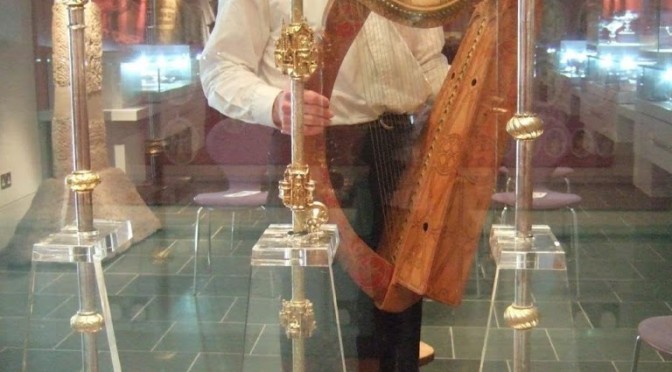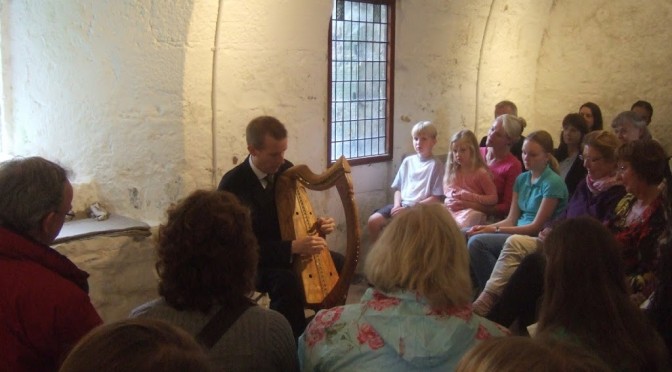Here’s a photo taken by one of the Museum staff, of my concert the other week.
The turnout was bigger than I had expected, at least 50 people in what is a fairly small gallery space. As usual I was slightly nervous of presenting the big, complex, intricate ceòl mór style pieces to a general audience, but afterwards people came up to me and said that the piece they loved best was Caniad San Silin – about 13 minutes of repetitive geometric variations.
For me it was such a thrill to present the music in this glorious setting. I chose pieces that were closely connected in to late Medieval contexts, all of them secular instrumental tunes. The structure and style of the music really fitted well with the decoration and craftsmanship of the medieval maces.
You can see some of the maces behind me. From left to right, Glasgow, Heidelberg x 2, Tübingen, Erfurt, and Bishop Fox’s crozier from Corpus, Oxford.
Dammit they are just so shiney!












